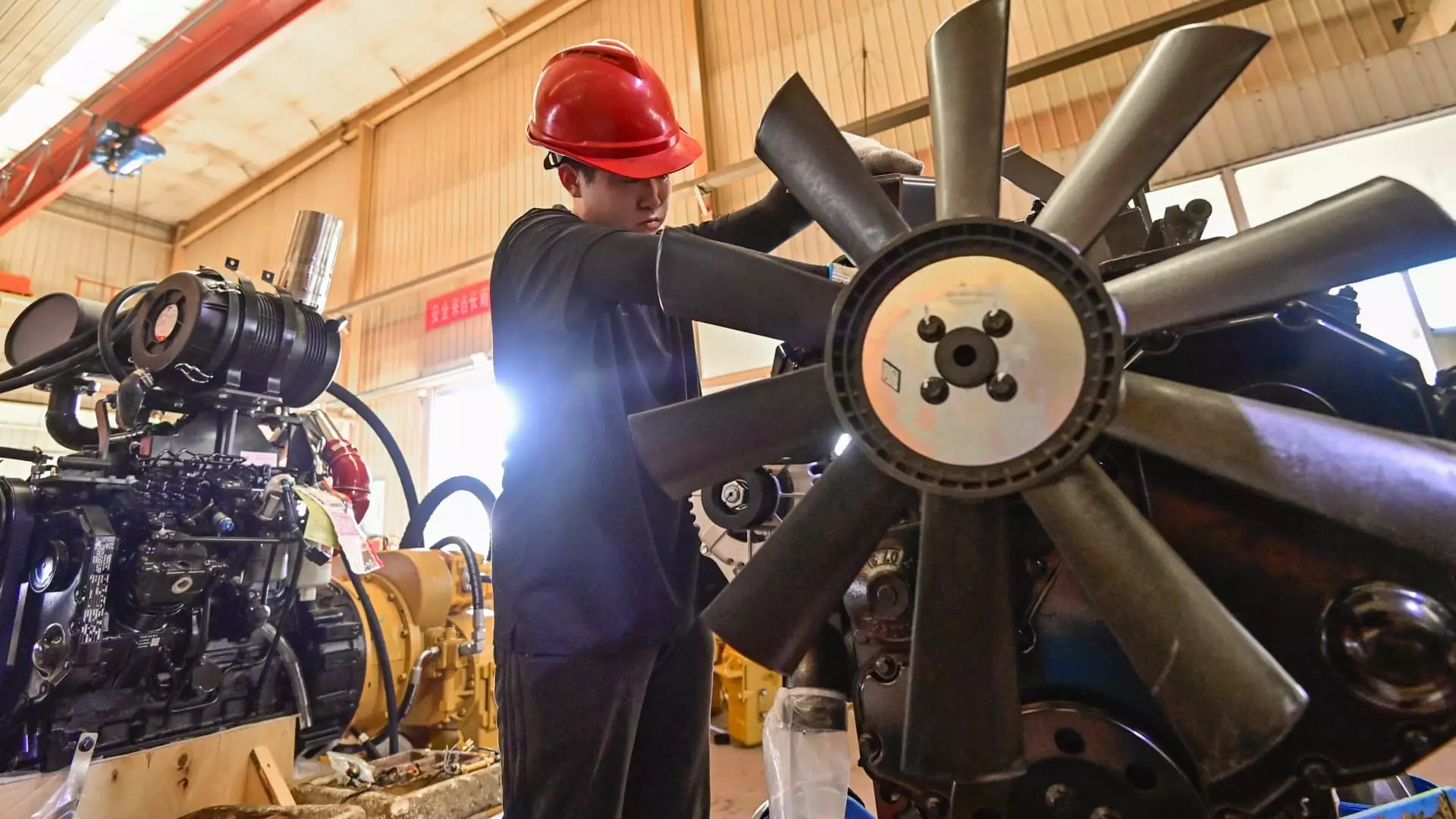In October, China’s manufacturing sector demonstrated a noteworthy shift, particularly among smaller manufacturers, as highlighted in a recent private survey conducted by Caixin and S&P Global. The Caixin/S&P Global manufacturing purchasing managers’ index (PMI) recorded a value of 50.3 for October, a notable improvement from September’s 49.3. This figure not only surpassed the market expectations reflected in a Reuters poll, which forecasted a PMI of 49.7, but also indicated a return to the realm of expansion. A reading above 50 signifies growth in activity, while any reading below that threshold denotes contraction.
This uptick in manufacturing activity aligns with the official PMI data released a day earlier, which marked the first signs of expansion in manufacturing since April. However, it is essential to note that while the official PMI encompasses large, state-owned enterprises, the Caixin survey predominantly focuses on private sector firms and exporters. This distinction is crucial as it underscores the differences in market dynamics faced by various segments of China’s manufacturing landscape.
The latest survey results reflect a general rebound in both supply and demand within the manufacturing sector. Wang Zhe, a senior economist at Caixin Insight Group, highlighted that overall market demand is recovering and production levels are increasing steadily. This resurgence is largely attributed to a rise in incoming new orders, which have accelerated at the fastest rate in four months. The driving factors behind this increase include improved underlying demand conditions and the successful pursuit of new business opportunities by manufacturers.
Despite this positive trend in new orders, the report noted a continued decline in export orders. However, the rate of this reduction has tapered off compared to previous months, suggesting some stabilization in international demand. It’s noteworthy that even as manufacturers ramp up production efforts, employment figures have continued to drop, indicating a cautious approach among businesses regarding workforce expansion.
The encouraging data from October echoes the positive effects of the multifaceted stimulus measures recently implemented by the Chinese government. In September, the People’s Bank of China made a significant move by reducing the reserve requirement ratio and cutting the seven-day reverse repurchase rate. These actions aimed to inject liquidity into the economic system and bolster lending capabilities among banks. Andy Maynard from China Renaissance labeled the latest PMI reading as an encouraging sign that the government’s initiatives to stimulate the economy are being positively received.
However, there is still skepticism about the sustainability of this recovery. Despite the upward trends, China’s economy continues to grapple with sluggish consumption and challenges in the property market. While the manufacturing sector shows signs of recovery, the overall economic landscape remains precarious.
Various economists point out that while the current sentiment in the manufacturing sector appears to be stabilizing thanks to a more growth-oriented policy framework from the government, uncertainties linger about the capacity for long-term recovery. Gary Ng of Natixis emphasized that domestic competition is fierce, and the industrial utilization rate, which gauges efficiency across businesses, continues to fall below the historical average.
Furthermore, external factors such as the upcoming U.S. elections and the global shift towards protectionism could significantly influence China’s exports. Analysts underscore the importance of price trends in forecasting the manufacturing recovery, as these indicators will be critical in determining the overall health of the sector moving forward.
In a context where policymakers are set to convene in the coming days, there is anticipation for more details on fiscal stimulus measures aimed at stabilizing and rejuvenating the economy. The outcomes of these discussions, expected to conclude by November 8, may provide additional clarity on the trajectory of China’s manufacturing sector and its potential to pivot towards sustainable growth.

